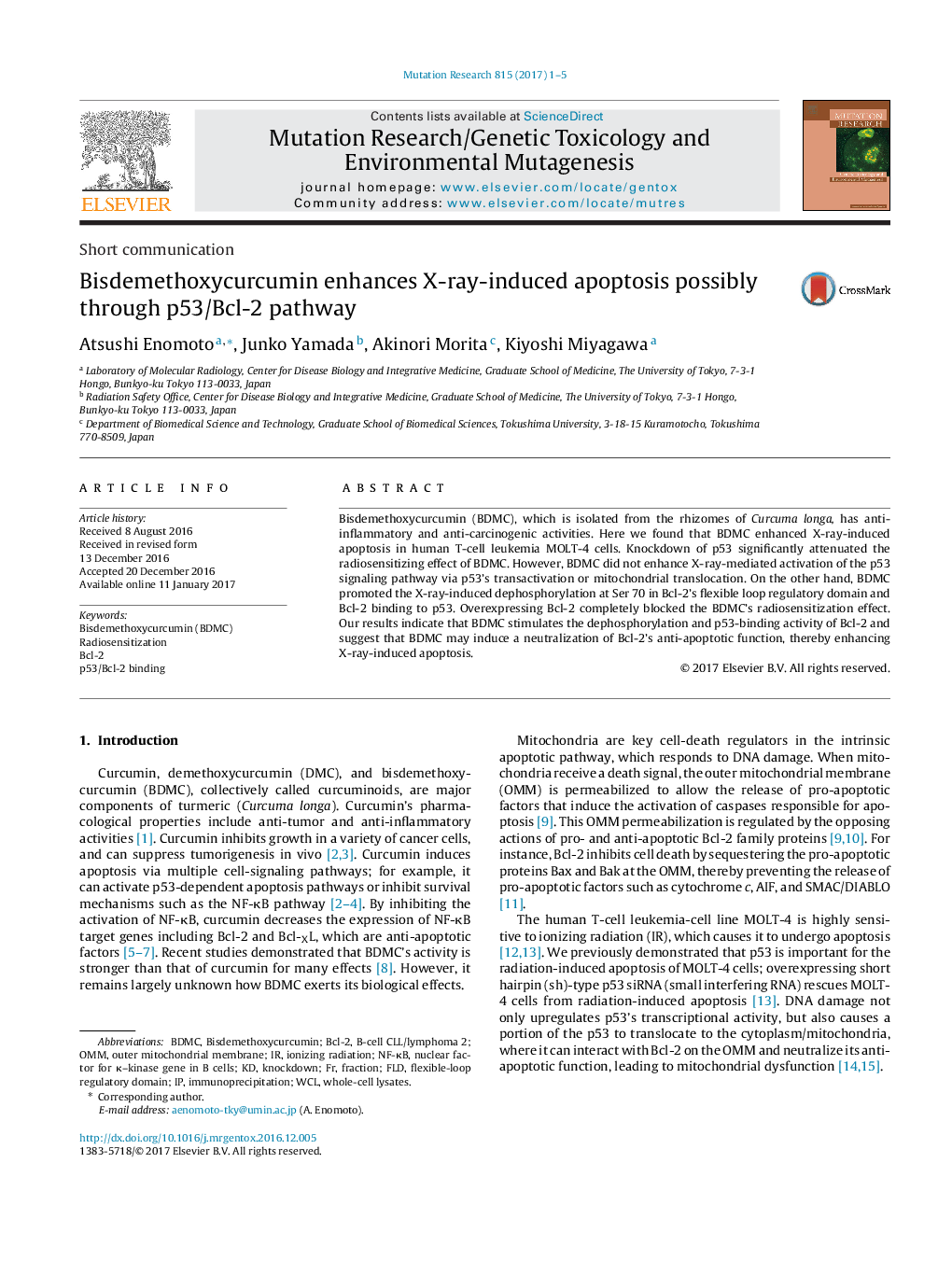| Article ID | Journal | Published Year | Pages | File Type |
|---|---|---|---|---|
| 5528752 | Mutation Research/Genetic Toxicology and Environmental Mutagenesis | 2017 | 5 Pages |
â¢Bisdemethoxycurcumin (BDMC) enhances X-ray-induced apoptosis.â¢BDMC enhances X-ray-induced dephosphorylation of Bcl-2's FLD region.â¢BDMC facilitates X-ray-induced p53/Bcl-2 interaction.â¢BDMC potentially induces a neutralization of Bcl-2's anti-apoptotic function.
Bisdemethoxycurcumin (BDMC), which is isolated from the rhizomes of Curcuma longa, has anti-inflammatory and anti-carcinogenic activities. Here we found that BDMC enhanced X-ray-induced apoptosis in human T-cell leukemia MOLT-4 cells. Knockdown of p53 significantly attenuated the radiosensitizing effect of BDMC. However, BDMC did not enhance X-ray-mediated activation of the p53 signaling pathway via p53's transactivation or mitochondrial translocation. On the other hand, BDMC promoted the X-ray-induced dephosphorylation at Ser 70 in Bcl-2's flexible loop regulatory domain and Bcl-2 binding to p53. Overexpressing Bcl-2 completely blocked the BDMC's radiosensitization effect. Our results indicate that BDMC stimulates the dephosphorylation and p53-binding activity of Bcl-2 and suggest that BDMC may induce a neutralization of Bcl-2's anti-apoptotic function, thereby enhancing X-ray-induced apoptosis.
